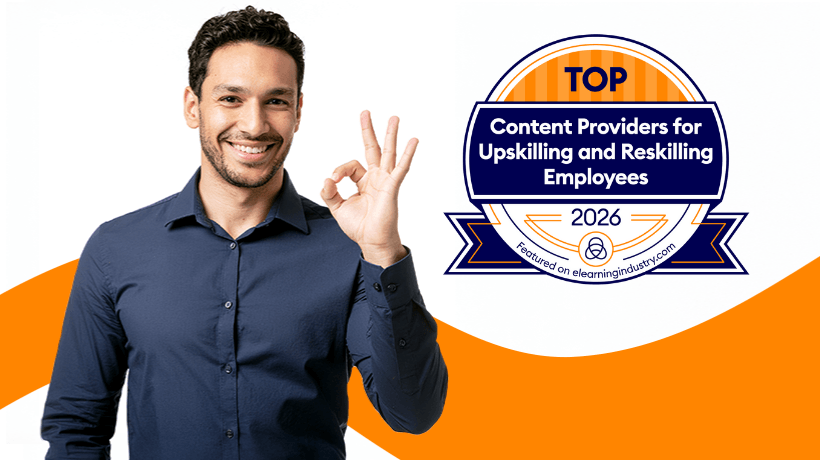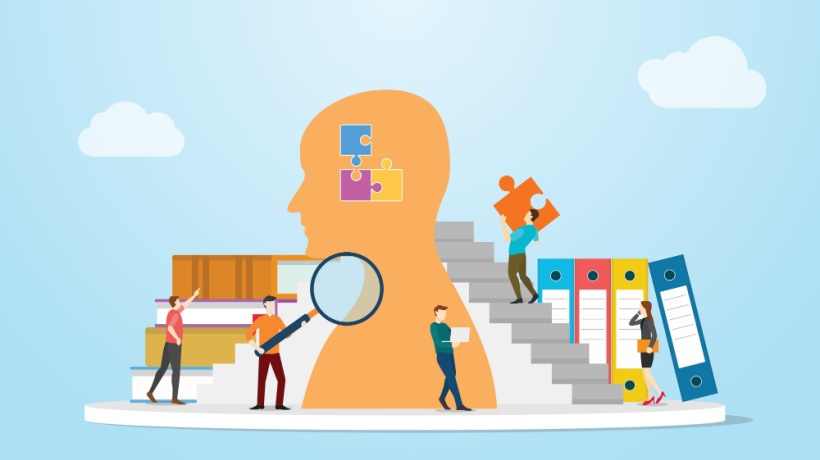Future-Proof Your Company With An Employee Upskilling Program
Predicting which skills will become valuable in the coming years can be a challenge for any company. Organizations that want to get ahead of the curve should establish guidelines for what their staff needs in order to be up-to-date and properly equipped to follow the fluctuations in their niche and market. That's why it is a good idea to design a well-rounded, context-specific employee upskilling program to bring meaning to online training and empower your teams. It's essential that your employee upskilling program puts everything into perspective and reflects your organization's culture and identity. Here are some creative ways to achieve that.
Context-Specific Upskilling Programs Are The Way To Go
1. In-House Experts
No one knows your company and your training needs better than your own people. In-house experts are vital in creating content that aligns with your business needs and purpose. Gather your greatest minds and ask them to train your staff in their area of expertise. Or even better, utilize your Learning Management System (LMS) features and allow them to design and author content that's specific to your niche. An LMS offers various solutions on how to structure and present your training material. Your in-house experts know your target audience personally, which can help them personalize the modules to maximize knowledge retention rates and cultivate positive learning experiences for their coworkers. Having an expert task force to help you create and implement your employee upskilling program also helps align your upskilling strategy with the context of your workplace. If the end product combines company-specific testimonials of lived experiences with specialized information, chances are that participation and engagement rates will skyrocket.
2. JIT Resources
Just-in-time resources improve long-term knowledge retention and promote more mindful action since employees are able to make well-informed decisions anywhere, anytime. JIT assets are already context-specific in nature; the material is selected to be immediately accessible to refresh the memory if there are any gaps as it reflects day-to-day company processes. Content libraries, short clips, and step-by-step guides are valuable in addressing and filling knowledge gaps. Also, keeping your library regularly updated with the new trends and innovations of your industry can smoothen the upskilling process greatly. Utilizing these resources to supplement your employee upskilling program is cost-effective, as well, since it prompts team members to improve their existing job-specific skills.
3. Niche-Specific Workshops
Companies focused on future-proofing their workforce have higher retention and job satisfaction rates. Ultimately, L&D opportunities need to reflect real-life conditions that are specific to a company's niche. Workshops that cover the latest developments and innovations in your industry can either be in-person or online, depending on your preferred work model. What's important is to tailor the learning context to parallel the context of the workplace. For example, if your employees work remotely, choose a webinar to update them on industry-related trends. Memory is context-dependent, and your employee upskilling initiatives must align with the workplace environment. Lastly, make sure that you select the best partners to spearhead these workshops. If you choose to outsource, ensure that your vendors are well-acquainted with the inner workings of your organization to create an upskilling strategy that aligns with the needs of your people.
4. Mentorship Programs
What better way to transfer skills from seasoned members to less experienced employees? Launch a mentorship program to complement your upskilling initiative. You can either assign mentors to mentees or have your staff sign up and book slots with someone they look up to in the organization. Not only do you make good use of existing resources, but you utilize your entire pool of employees and allow them to contribute to your company's success. Not to mention, it boosts engagement and cuts down costs. Experienced employees bring meaning to your training through their direct connection with your company's culture and internal processes. They can become great examples of internal advancement by sharing tips and wisdom on how to utilize skills effectively to grow your career.
5. On-The-Job Training
Upskilling training should be done during work hours so you can address job-specific challenges that may arise within a given workday. Expert trainers can supervise the process while your employees undertake new tasks and learn through practical experience. Those new capabilities are immediately incorporated into a familiar everyday environment so that training becomes context-specific and relevant. On-the-job training can also provide opportunities for seasoned members to aid in the training of their fellow coworkers in a proactive way. Additionally, it gives every employee the chance to redefine their approach to job-specific duties and optimize their work performance.
Conclusion
Upskilling your workforce means that your company is ready to take on the future with a dynamic, well-equipped, and up-to-date team of experts in their field. Designing and incorporating effective employee upskilling requires making the most of existing resources in order to make the curriculum industry-related and company-specific. Embedding context highlights the ways your real-life work environment can become a concrete point of reference throughout your employee's learning process. Discover the right content provider for your employee upskilling program and start future-proofing your company and your workforce today.








